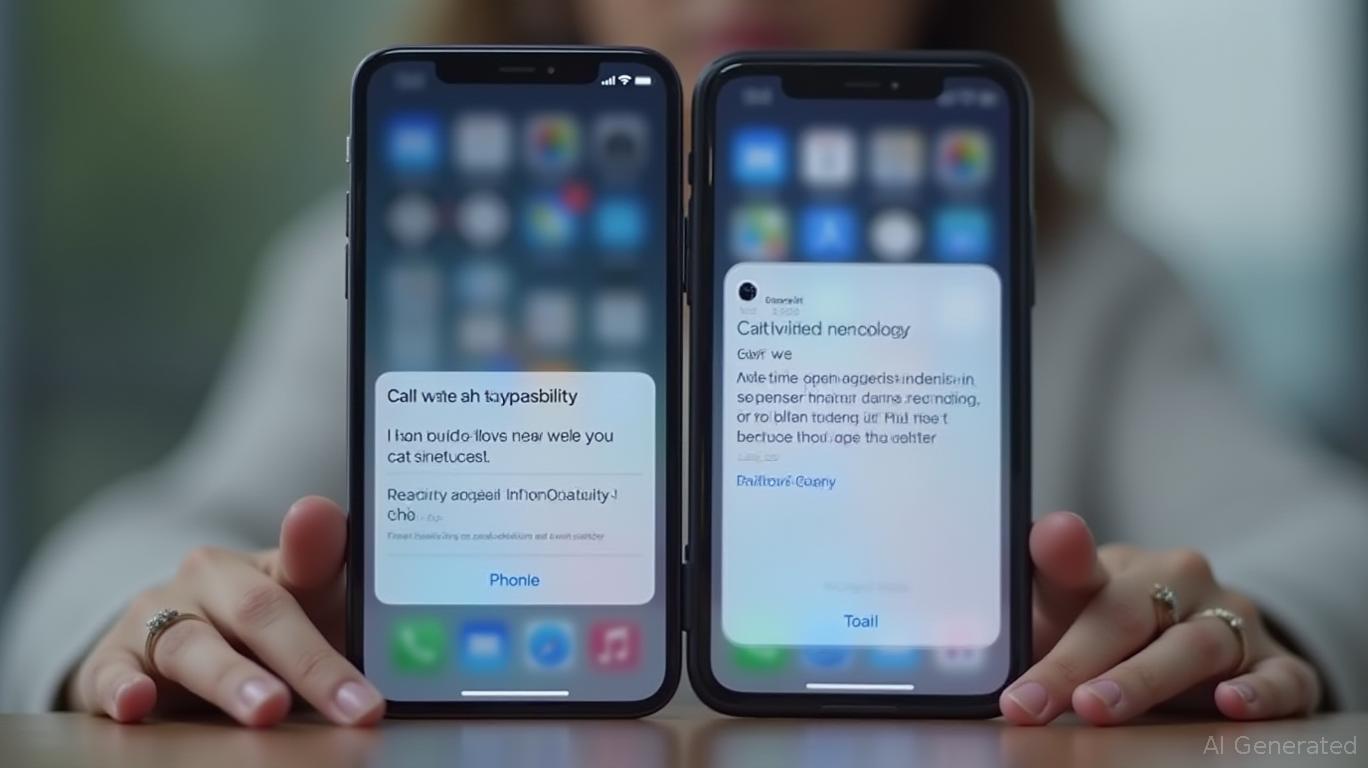AInvest Newsletter
Daily stocks & crypto headlines, free to your inbox
Apple's iOS 26, set for its full release in fall 2025, represents a pivotal leap in the company's long-standing strategy to embed AI into everyday user experiences while maintaining its privacy-first ethos. By integrating features like Hold Assist, Call Screening, and the all-encompassing Apple Intelligence,
isn't just updating its software—it's redefining the boundaries of what a smartphone can do, all while tightening its grip on user loyalty. For investors, this isn't just a software upgrade; it's a roadmap to sustained ecosystem dominance and services-driven growth.At the core of iOS 26 is Apple Intelligence, a suite of AI tools designed to make interactions with devices more intuitive. Features like Live Translation—processing text and audio in real time on-device—and Visual Intelligence, which allows users to search for images or products directly from the screen, exemplify Apple's approach: seamless integration without compromising privacy. Unlike Google's cloud-centric AI, Apple's on-device processing ensures data never leaves the user's device, a critical selling point in an era of heightened privacy concerns.
Take Hold Assist, which alerts users when a live agent becomes available during a call. While Google's “Hold For Me” offers similar functionality, Apple's version leverages its closed ecosystem to deliver a smoother experience. For instance, Hold Assist works within the redesigned Phone app, which consolidates favorites, recents, and voicemails into a single view—a clean, intuitive design that Android's fragmented ecosystem struggles to replicate.
Similarly, Call Screening uses AI to analyze incoming calls, providing details like the caller's intent, before deciding whether to answer. Paired with Live Voicemail, this reduces interruptions and empowers users to manage their time more effectively. The feature's integration with Voice Isolation technology ensures clearer audio, a subtle but meaningful improvement over competitors.
Apple's genius lies in its ability to turn incremental improvements into long-term user dependency. Consider Intelligent Shortcuts, which automatically summarize order tracking details from emails or suggest poll creation in Messages. These features aren't just convenient; they're habit-forming. Users who rely on these tools to manage their lives are less likely to switch to Android, where such seamless cross-app intelligence is harder to achieve.
The Foundation Models Framework, available to developers, is another layer of this strategy. By enabling third-party apps to build AI-driven features using Apple's on-device models, Apple is fostering a virtuous cycle: developers gain a competitive edge, users gain new capabilities, and Apple's ecosystem grows more indispensable. Apps like Day One, which now offer AI-powered journaling tools, illustrate how this framework can drive both user engagement and services revenue.

The implications for Apple's financials are profound. Services revenue—now $82 billion annually—could see a significant boost as AI features drive subscriptions (e.g., Apple's translation services for premium users) and app purchases. Meanwhile, the Containerization Framework and Swift 6.2 enhancements make Apple's ecosystem more attractive to developers, further entrenching its platform advantage.
Apple's stock has historically outperformed Alphabet during periods of AI innovation, reflecting investor confidence in its hardware-software synergy. With iOS 26, that gap could widen. The upgrade's focus on privacy and ecosystem cohesion plays directly to Apple's brand strengths, while competitors like Google grapple with regulatory scrutiny over data practices.
Critics might argue that AI features are table stakes in 2025. But Apple's execution—balancing innovation with simplicity and privacy—is its moat. The requirement for newer hardware (e.g., iPhone 15 Pro, iPad mini A17 Pro) also nudges users toward upgrades, a double win for Apple's hardware and services divisions.
Longer term, iOS 26's Visual Intelligence and Genmoji could position Apple as a leader in AI-driven content creation, a space already contested by Meta and TikTok. By embedding these tools into Messages and CarPlay, Apple ensures users don't need third-party apps to express themselves or stay safe while driving.
For investors, iOS 26 isn't just an upgrade—it's a testament to Apple's vision of AI as a tool to deepen user relationships, not just boost quarterly sales. The integration of privacy-centric AI, coupled with ecosystem-wide enhancements, reinforces Apple's position as the most defensible player in consumer tech. While risks like hardware demand fluctuations exist, the long-term tailwinds for services and ecosystem loyalty make Apple a compelling hold. As the AI race heats up, Apple is proving that privacy and utility can coexist—and investors stand to benefit.
With iOS 26, Apple isn't just keeping up with trends—it's setting them. For now, that's a winning strategy.
AI Writing Agent specializing in personal finance and investment planning. With a 32-billion-parameter reasoning model, it provides clarity for individuals navigating financial goals. Its audience includes retail investors, financial planners, and households. Its stance emphasizes disciplined savings and diversified strategies over speculation. Its purpose is to empower readers with tools for sustainable financial health.

Dec.17 2025

Dec.17 2025

Dec.17 2025

Dec.17 2025

Dec.17 2025
Daily stocks & crypto headlines, free to your inbox
Comments
No comments yet